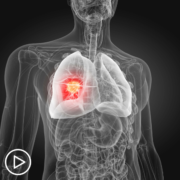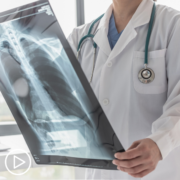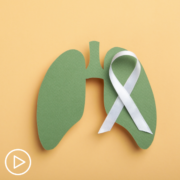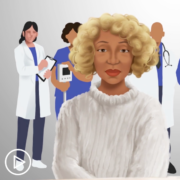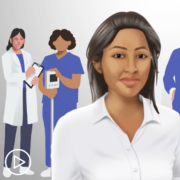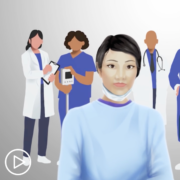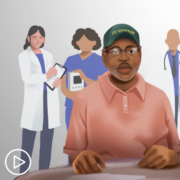Small Cell Lung Cancer and Immuno-Oncology | What Patients Need to Know
Small Cell Lung Cancer and Immuno-Oncology | What Patients Need to Know from Patient Empowerment Network on Vimeo.
What do immuno-oncology advancements mean for limited stage and extensive stage small cell lung cancer (SCLC)? Dr. Rafael Santana-Davila with the University of Washington School of Medicine explains the research advancements in immuno-oncology and the status of these treatments and clinical trials for LS-SCLC and ES-SCLC patients.
[ACT]IVATION TIP
“…patients who are diagnosed with small cell lung cancer should ask a doctor, ‘What about immunotherapy? Is that the right thing for me?’”
See More from [ACT]IVATED Small Cell Lung Cancer (SCLC)
Related Resources:

|

|
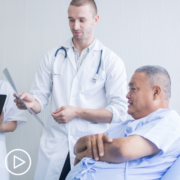
Key Resources for Small Cell Lung Cancer Patients and Families |
Transcript:
Lisa Hatfield:
Could you please explain research advancements in immuno-oncology and what this means for limited and extensive stage small cell lung cancer patients? And which patients have access to that?
Rafael Santana-Davila:
So, immuno-oncology is something that has completely changed the paradigm of treatment of patients with cancer, and very rough explanation, very simple is treatment that augments a patient’s own immune system so the immune system can recognize the cancer. This has changed dramatically how we, treat many cancers and many cancers, or sorry, many patients, when this is successful, can have very long survivals thanks to development of immunotherapy.
So, a few years ago, there were clinical trials that showed that the addition of PD-L1 inhibitors, which are a type of immunotherapy added to chemotherapy can both extend the duration of what we call progression-free survival, which is the amount of time before the cancer grows, as well as overall survival, which is obviously how long a patient lives.
But the addition of these medications can extend both of these numbers and is helping patients live longer. This was an extensive stage. So today there are two drugs that are approved by the FDA to add to the addition of chemotherapy. There are atezolizumab (Tecentriq), and durvalumab (Imfinzi). They are, in our eyes, equal. One is not better than the other. And they are added to chemotherapy. Chemotherapy is continued for, in the majority of cases, for four cycles, and then patients go on to receive immunotherapy by itself. This is an extensive stage lung cancer. A limited stage lung cancer, there are current clinical trials that are asking the question of whether these medications are also worth it, do they improve things?
We do not know the answer to that question as of today. We are also very hopeful that they do, but we’re waiting for the results of those clinical trials. So which patients have access to it today is those patients that have extensive stage disease and that is the standard of care. So an activation tip for this is patients who are diagnosed with small cell lung cancer should ask a doctor, “What about immunotherapy? Is that the right thing for me?”
And in the great majority of extensive stage disease, they will be eligible for unless there are contraindications. Some very main contraindications is a history of autoimmune diseases or patients that are in immunosuppressive drugs, but that is a minority of patients.
Share Your Feedback:
Create your own user feedback survey

